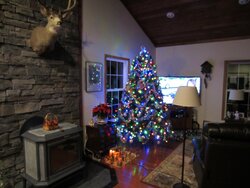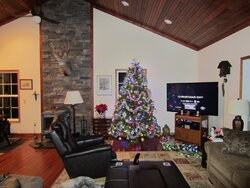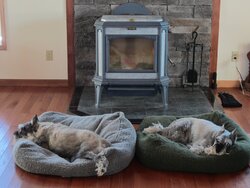Tenn Dave
Minister of Fire
is helpful
I personally have only owned 2 stoves, a coal/wood burner many years ago and my current Woodstock Progress Hybrid. But many of my friends and relatives have wood stoves that I have been around for years. The big difference we have noticed is that the soapstone keeps the house in the comfort zone for a longer period of time. It sort of smooths out the burn cycle. Long after the fire has die down, the stove is still giving off heat. The flip side is that it takes a little longer for the stone to warm up. To a lesser extent, the heat seems to feel a little less harsh then a steel stove. But to be honest, I don't think it feels that much different then steel or cast - maybe a little softer. I have my stove in a great room with cathedral ceilings (approx. 800 sq ft +/- and the stove does a beautiful job of warming up the room. The rest of the house (1500 sq ft ranch) also warms up, but about 3 - 5 degrees less than stove room. Perfect for sleeping. I am very happy with the soapstone and would do it again in a heartbeat. I also love the way it looks. Hope that is helpful and answers your question.Tenn Dave, talking to someone locally who has a Hearthstone stove as a secondary heat source in his mountain cabin, he mentioned that it's a different kind of heat than a steel stove, but he loves it. He has an open floor plan and it heats most everything comfortably. Do you have any experience with other stoves that would give you a comparison on how a soapstone stove radiates vs. a steel stove?
Last edited:





 I'll turn the large ceiling fan on for a few minutes if we get layered air. We live in the country and I like silence (except when cutting trees), my wife likes the radio on - go figure.
I'll turn the large ceiling fan on for a few minutes if we get layered air. We live in the country and I like silence (except when cutting trees), my wife likes the radio on - go figure.


 I even bought an iphone a few months ago and found out it's not as good as my old Samsung. So much for that hype too!
I even bought an iphone a few months ago and found out it's not as good as my old Samsung. So much for that hype too!
